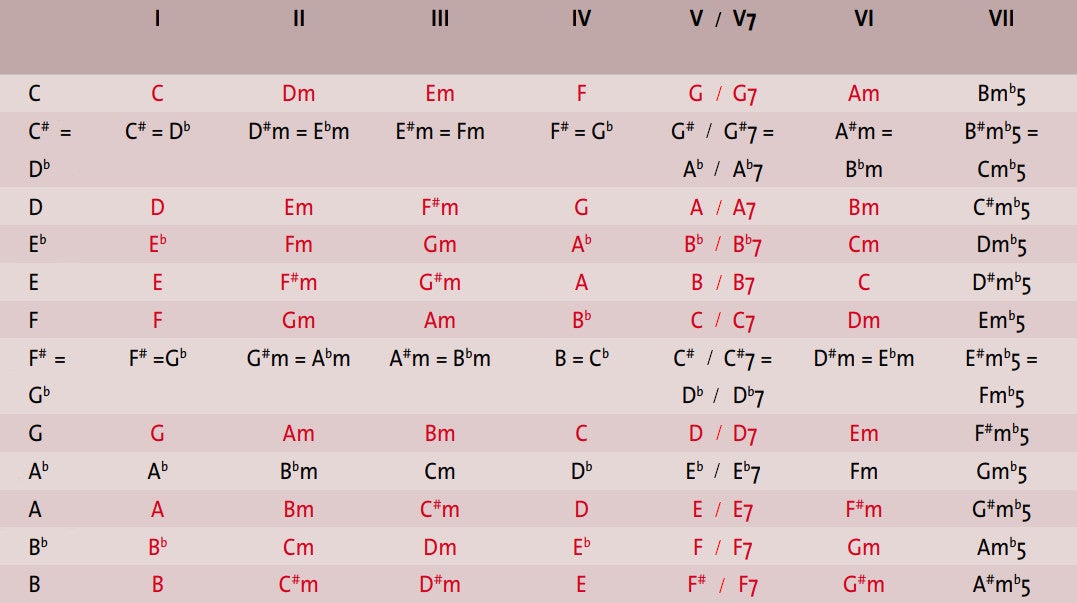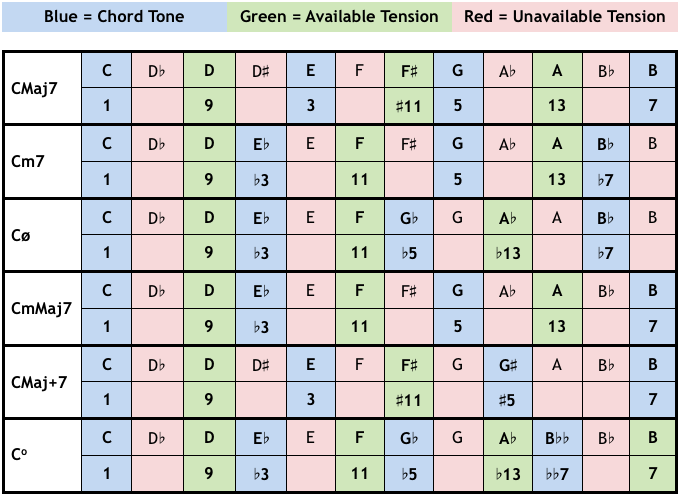Chord Progressions Which Ones Can Be Used for Building Tension
There are so many songs using 1-4-5 you could write a few volumes worth. There are two ways to determine what tensions will work on a chord.

5 Most Used Chord Progressions In Edm Top Music Arts
If you have a G major chord G B D you can add any other note from the diatonic scale to add tension.

. Here are some basic techniques used to build tension-Using II or IV before V-Using VI before the II before the V-Using III before the VI before the II before the V-Changing the II III or VI that are normally minor chords into dominant 7 chords-Adding a b9 or b13 to the V chord. However when it comes to chord progressions one of the best methods is looping and the use of rhythmic tension. Your ear trumps all other theories of music.
But you can create a pleasant build in tension by ending a phrase on a less-common chord. Based on how you use this progression you can also push it in a different direction not necessarily a sad one. Thats the reason the 2-5-1 progression sounds so nice and is so widely used.
Create Tension With Sus4 and Sus2. Its all about deviating from the established chord progression and building tension with rhythm. What you are looking for are cadences which are commonly used patterns that creates and release tension.
Functionally the progression can bring you home to the tonic establish a new tonal center or. This region progressively increases the tension engages the listener and builds up movement. This works well in a minor 2 5 1 progression as it not only adds tension but adds more emotion to what youre playing.
G C D7 Em for example or perhaps G C D7 C. Quoted from wikipedia I cant explain it better emphasis mine. More often than not this will orbit around three or four chords even more frequently hovering on one chord for an indeterminate length of time building tension through other elements melody rhythm and timbre all of which in some subtle way influence the way.
Finally dominant chords are the sounds that are going to be most tense in any given key. To avoid this cancel and sign in to YouTube on your computer. Theres almost too many songs to count that include these chords in their progressions.
In Western musical theory a cadence Latin cadentia a falling is a melodic or harmonic configuration that creates a sense of resolution finality or pause A harmonic cadence is a. Play a G Major then add in A C E. However this is not always a general rule.
The other notes in the diatonic scale of G major are A C E and F. Test it for yourself. The second is to use a scale for the harmonic duration of the chord.
Videos you watch may be added to the TVs watch history and influence TV recommendations. Here we have one of the most used chord progressions ever. This scale will be called a chord-scale.
Harry McClintock Big Rock Candy Mountain Elvis Presley Teddy Bear CCR Down on the Corner. G C D7 Em GB C D7 G. So another chord we can use that would also utilize the D would be a chord using D as its seventh.
As soon as you hit that unexpected chord at the end it creates tension allowing you to do the progression again but ending on the more expected tonic chord. The first is to add any diatonic note from the key into the chord so long as it sounds acceptable to you. Tonic chords are the centerhome base of a key and therefore arent tense sounding.
A three-chord progression can be just as intense. And often it is seen as I-IV-V7 as that V7 provides more tension which rock loves. This is because the perfect 5th interval is the strongest musical interval out there to use to connect notes and thus chords together.
Moving from one to the other and back again is how you create the sense of tension and release that gives chord progressions their forward momentum. The Ddim7 chord in this context sounds quite dark. In this example were substituting our G7 chord with a D fully diminished 7th chord Ddim7.
However weve used D Minor so much that its starting to get a little stale and the second to last chord in a progression is a special chord that can be used to build up a lot of tension right before the measure blows its load on the last chord giving that sense of tension-then-release. I IV and V are the basic building blocks for chord progressions in western music. If playback doesnt begin shortly try restarting your device.
This part features the root chord and estabilishes the key of the chord progression. Sub-dom while not crying out for resolution have an away from the base kind of sound. Quite literally this is a chord found in a funk song.
You need to build up tension and let the audience sink into sadness. What is a funk chord progression. The quintessential jazz chord progression the ii-V-I is just the two previous progressions squeezed together the V-I and the ii-V.
Plenty of sad chord progressions tends to be relatively long. Going from a relative V chord to a relative I whether in a major or minor key or going outside the key is one of the most useful ways to build a strong progression. You can loop the first portion and speed up the progression as it gets closer to the release drop.
This chord implies a dominant 7b9 sound on the G7. Since this is the tonal itself it is the area of most stability in the entire chord progression. To understand this properly let us divide a chord progression into three parts-1 The Tonic.

Understanding Chord Progressions Intervals Leading Notes Tension Bax Blog Co Uk

Chord Progressions How Major And Minor Chords Work In Songs Landr

No comments for "Chord Progressions Which Ones Can Be Used for Building Tension"
Post a Comment